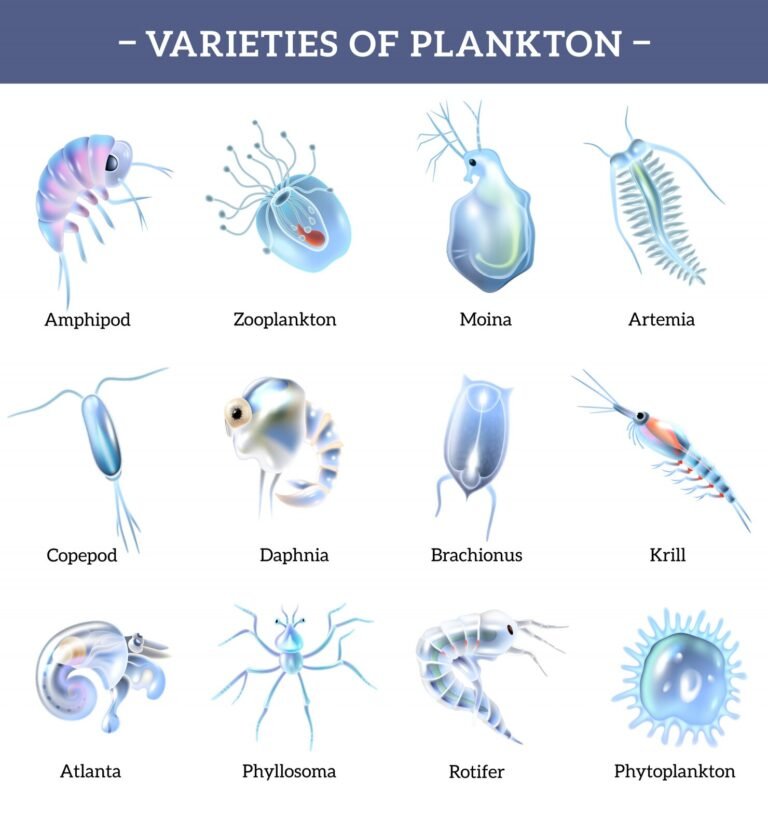Levels of Organisation in Ecosystems
When I was younger, I loved exploring the outdoors. I’d watch ants carrying food back to their nests, hear birds singing in the trees, and see deer quietly moving through the grass. At the time, I didn’t think much about how these creatures were connected—I just knew that nature felt alive and full of wonder. But as I grew older and learned more about ecology, I realised I had been watching a carefully balanced system at work.
Nature isn’t random. Every living thing, from the tiniest insect to the largest tree, fits into an organised structure. This structure, known as the levels of organisation in ecosystems, helps scientists understand how life functions. It starts with a single organism and expands to entire populations, communities, and vast ecosystems, all the way up to the entire planet—the biosphere.
But why does this matter? Because understanding nature’s organisation helps us protect it. The more we learn about how species interact, the better we can address issues like habitat loss, climate change, and biodiversity decline. In this guide, we’ll explore the six levels of organisation in ecosystems, using real-world examples, expert insights, and research to show how everything in nature is connected.
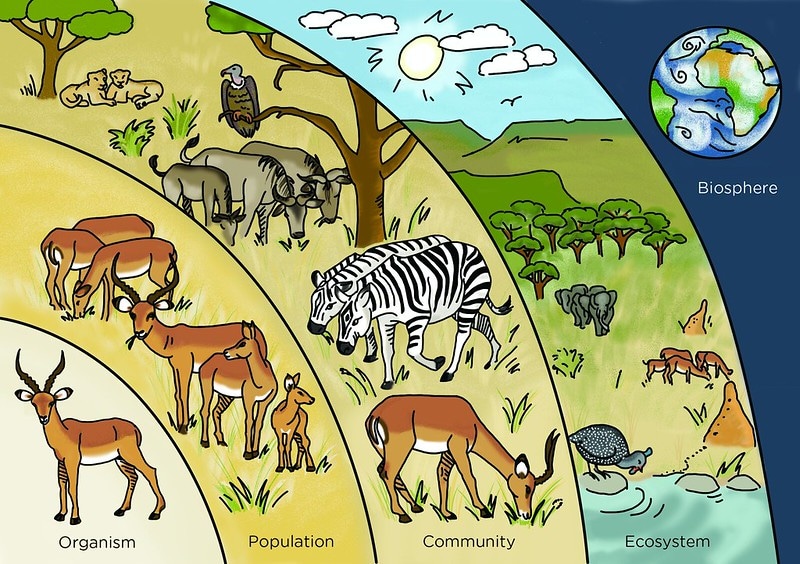
In This Article
- The Six Levels of Organisation in Ecosystems
- 2. Population: Groups of the Same Species
- 3. Community: Interactions Between Populations
- 4. Ecosystem: The Living and Non-Living Connection
- 5. Biome: Large-Scale Ecological Patterns
- 6. The Biosphere: Life on a Global Scale
The Six Levels of Organisation in Ecosystems
Ecologists classify ecosystems into six primary levels of organisation:
- Organism (Individual)
- Population (A group of individuals of the same species)
- Community (Multiple populations interacting)
- Ecosystem (Biotic and abiotic components together)
- Biome (Large areas with similar climate and ecosystems)
- Biosphere (All life on Earth)
Let’s discuss each level in depth, adding real-world examples, expert insights, and case studies to bring them to life.
1. Organism: The Individual in the Ecosystem
At the heart of every ecosystem is the individual organism—a single living being, whether it’s a towering tree, a tiny ant, or a massive blue whale. Each organism, no matter how small or large, plays a role in nature. It finds food, reproduces, and adapts to its environment to survive. Some thrive in extreme heat, others endure freezing cold, but all are shaped by the conditions around them.
Personal Insight: The Resilient Cactus in My Backyard
I remember planting a saguaro cactus in my backyard years ago. At first, it didn’t seem like much—just a small, spiny plant. But over time, I watched it grow, despite the intense heat and dry soil. It stored water in its thick stem, its spines protected it from animals, and it opened its flowers only when pollinators were most active.
That cactus taught me something profound: every organism is designed for survival in its own way. Some animals run fast to escape predators, while others blend into their surroundings to stay hidden. Plants develop deep roots to find water, while insects evolve to mimic leaves or twigs. Life is constantly adjusting and constantly evolving.
Expert Insight: Evolutionary Pressures at the Individual Level
“Every organism is shaped by evolutionary pressures,” explains Dr. David Sloan Wilson, an evolutionary biologist at Binghamton University. “Whether it’s a predator developing sharper claws or a prey animal evolving camouflage, survival is all about adaptation to the ecosystem.”
At the individual level, organisms constantly adapt to environmental challenges. Think about a bird with a sharp beak, perfect for cracking nuts, or a fish that can breathe in low-oxygen waters. These traits aren’t accidents—they result from countless generations of adaptation.
Studies by Dr. Rosemary and Peter Grant on Darwin’s finches show how beak size shifts in response to food availability, while Dr. Hopi Hoekstra’s research on Peromyscus mice demonstrates how fur color adapts to match the environment, reducing predation. Predators, too, evolve—snow leopards with larger paws navigate snowy terrain more efficiently, giving them a survival advantage.
Case Study: The Snow Leopard’s Adaptation
One of the best examples of an organism built for survival is the snow leopard (Panthera uncia). Found in the rugged mountains of Central and South Asia, it has thick fur to withstand freezing temperatures, wide paws that function like snowshoes, and powerful limbs to leap across cliffs. Studies show that these adaptations help it survive in an environment where food is scarce and the terrain is unforgiving. For instance, research by Smith et al. (2021) details the snow leopard’s forelimb anatomy, highlighting its balance between climbing, pouncing, and navigating rocky landscapes.
From a simple cactus to a mighty snow leopard, every organism is a master of adaptation. The beauty of nature lies in this ability to evolve, survive, and find a way—even in the harshest conditions.
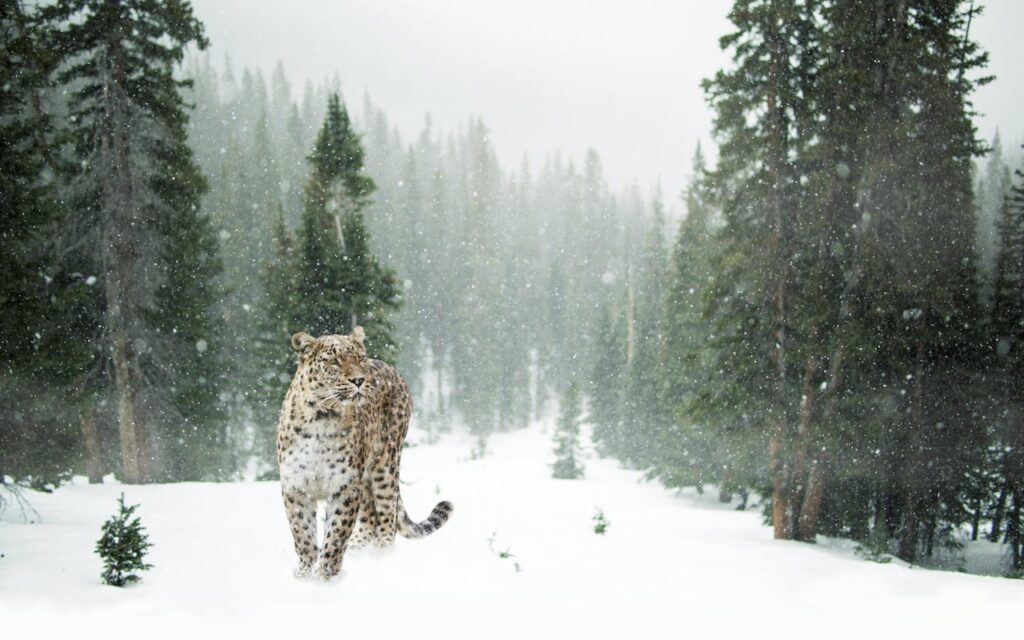
2. Population: Groups of the Same Species
When I was a kid, I used to sit in my backyard and watch ants march in long lines, carrying tiny bits of food. I didn’t think much of it back then, but now I realise I was watching a population in action—a group of the same species working together in the same space. Whether it’s ants in a backyard, a herd of elephants in Africa, or a pack of wolves in Yellowstone, populations are the building blocks of ecosystems.
A population is simply a group of individuals of the same species living in the same area and interacting with one another. That could mean competing for food, working together to raise their young, or even migrating across continents. Every species, from the tiniest bacteria to the largest whales, forms populations that shape the natural world.
The Incredible Journey of the Monarch Butterfly
One of the most awe-inspiring examples of a population in motion is the monarch butterfly migration. Every year, millions of monarch butterflies (Danaus plexippus) travel up to 3,000 miles from Canada to Mexico to escape the harsh northern winters. Imagine that—tiny, delicate butterflies navigating thousands of miles without a GPS, relying solely on instinct and environmental cues like temperature and daylight (World Wildlife Fund, 2022).
But here’s the worrying part: monarch populations are shrinking fast. Habitat loss, climate change, and pesticide use have all taken a toll.
Monarch Butterfly Population Decline
| Year | Estimated Monarch Population (Millions) | % Decline from Previous Year |
|---|---|---|
| 2015 | 200 | – |
| 2018 | 140 | 30% |
| 2022 | 90 | 36% |
The numbers don’t lie—monarch populations have plummeted by more than 50% in the 2023-2024 season. If this trend continues, these beautiful butterflies could disappear from our skies.
Populations are more than just numbers; they’re living, breathing communities. And when one species struggles, the entire ecosystem feels the impact. So, what can we do to help? Protecting habitats, planting milkweed (the monarch’s primary food source), and reducing pesticide use are small but powerful steps. Because every species—big or small—plays a role in keeping our world in balance.
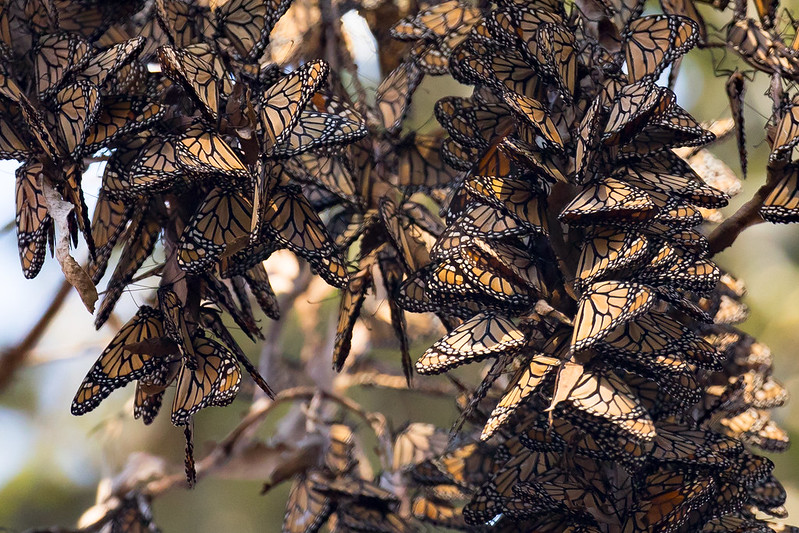
Learn More: What are the 10 Most Common Landforms?
3. Community: Interactions Between Populations
A community is a collection of different species living together in the same place, constantly interacting. These relationships aren’t random—they shape the balance of nature. Some species compete for resources like food, water, or space. Others form mutualistic relationships, helping each other survive. And then there’s predation, where one species feeds on another, keeping populations in check.
To put it simply, an ecological community is like a neighbourhood. Think of a forest, ocean, or grassland as a bustling town where every creature has a role. Just like people in a town depend on each other—farmers grow food, doctors provide healthcare, teachers educate—plants, animals, and microorganisms in an ecosystem rely on one another to keep life going.
The African Savanna: A Perfect Example of Community Life
Imagine standing in the heart of the Serengeti, a vast African savanna stretching as far as the eye can see. You see a herd of zebras grazing in the tall grass. Nearby, acacia trees provide food and shelter for insects, giraffes, and birds. Then, suddenly, a lioness stalks through the grass, eyes locked on a zebra. Within seconds, she pounces. The herd scatters, but she succeeds, ensuring food for her cubs.
This might seem brutal, but it’s part of a healthy ecosystem. Without predators like lions, the zebra population could explode, overgrazing the land and harming plant life. And without acacia trees, many smaller species would lose their habitat. Each species plays a role in maintaining the balance of this community.
Why Biodiversity Matters
According to Dr. Edward O. Wilson, a renowned biologist and authority on biodiversity, “Biodiversity is our most valuable but least appreciated resource.”
Research supports this perspective. A meta-analysis published in Ecology Letters found that biodiversity promotes ecosystem functioning in changing environments, enhancing resilience against environmental stressors.
So, the next time you see birds in a tree, bees pollinating flowers, or even a spider catching a fly, remember—you’re witnessing a community at work. Everything in nature is connected, just like us.
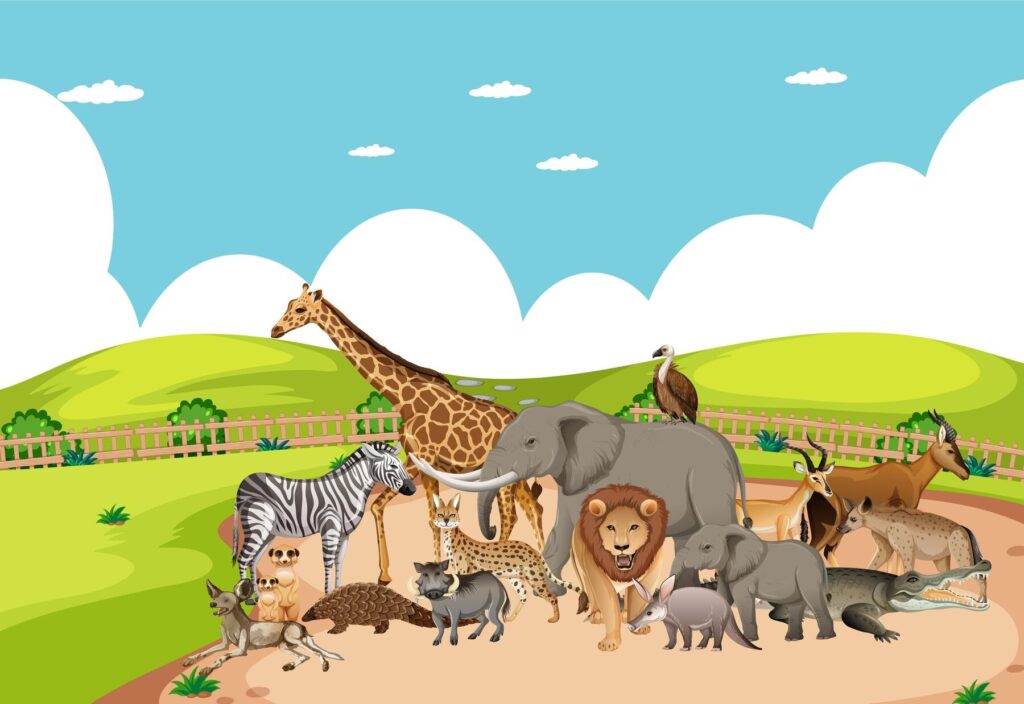
4. Ecosystem: The Living and Non-Living Connection
An ecosystem is a beautiful, complex network where living things (biotic factors)—like animals, plants, and microbes—interact with non-living elements (abiotic factors)—like sunlight, water, soil, and air. Every place on Earth, from dense forests to deep oceans, is part of an ecosystem. It’s easy to think of nature as just a collection of animals and plants, but without abiotic elements, life couldn’t exist.
Think about a coral reef in the ocean. The vibrant fish, sea turtles, and sharks depend on the coral itself, which relies on warm water and sunlight. Or take a wetland—frogs, birds, and insects thrive there because the water filters through rich soil, creating the perfect habitat. Even in our backyards, small ecosystems exist where bees pollinate flowers, earthworms enrich the soil, and rainwater sustains plant life.
How One Change Can Transform an Entire Ecosystem
Ecosystems are delicate. One small change—whether natural or caused by humans—can have ripple effects.
A powerful example of this is the Yellowstone Wolf Reintroduction in 1995. Before wolves were removed from Yellowstone National Park in the early 1900s, they kept deer (elk) populations in check. Without wolves, elk overgrazed young trees, leaving fewer habitats for birds and beavers. When scientists reintroduced wolves, something amazing happened:
- Wolves controlled the elk population, allowing trees like willows and aspens to recover.
- Beavers returned, building dams that created new wetlands.
- Songbirds thrived, nesting in the growing trees.
- Rivers stabilised, as stronger plant roots prevented erosion.
This is called a trophic cascade, where one species influences an entire ecosystem (Ripple & Beschta, 2013). It proves that everything in nature is connected.
Understanding ecosystems helps us appreciate why protecting them matters. Whether it’s saving forests, cleaning up oceans, or restoring wildlife, we have the power to keep ecosystems healthy—for nature, and for ourselves.
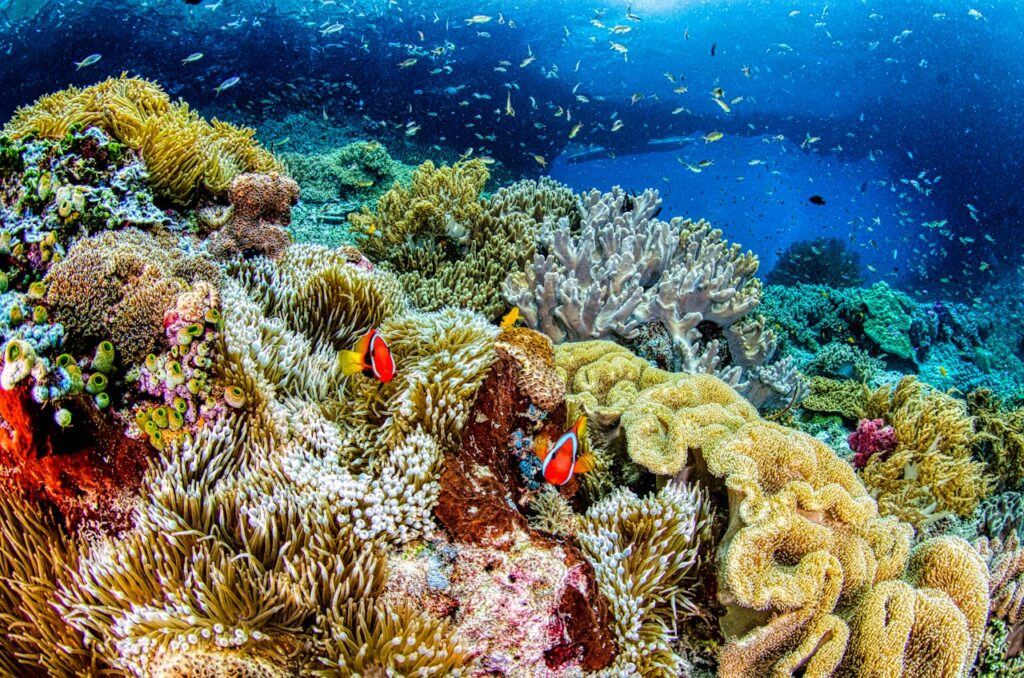
5. Biome: Large-Scale Ecological Patterns
A biome is a vast natural region with its own climate, plants, and animals. Think of it as Earth’s way of organising life into different “neighbourhoods.” Each biome is shaped by temperature, rainfall, and geography, which determine what can survive there.
For example, the Amazon Rainforest is warm and humid year-round, making it a paradise for jaguars, macaws, and countless plant species. Meanwhile, the Sahara Desert is blistering hot by day and freezing at night, home to creatures like camels and scorpions that have adapted to extreme conditions. Then there’s the Arctic Tundra, where temperatures can drop to -30°C, yet Arctic foxes and lichens manage to thrive in this icy wilderness.
Why Do Biomes Matter?
Biomes are essential because they support life, regulate the planet’s climate, and provide resources like food, medicine, and oxygen. The Amazon, for instance, absorbs and stores vast amounts of carbon, helping to mitigate climate change while sustaining diverse ecosystems (NASA study).
Different biomes also play a role in the water cycle, carbon cycle, and other natural systems that keep our planet balanced. When we disrupt them through deforestation, pollution, or climate change, we’re not just harming plants and animals; we’re harming ourselves.
Comparing Major Biomes
| Biome | Avg. Temperature | Annual Rainfall | Notable Species |
|---|---|---|---|
| Rainforest | 25-30°C | 2500+ mm | Jaguars, Macaws |
| Desert | 10-40°C | <250 mm | Camels, Scorpions |
| Tundra | -30 to 10°C | 150-250 mm | Arctic Foxes, Lichens |
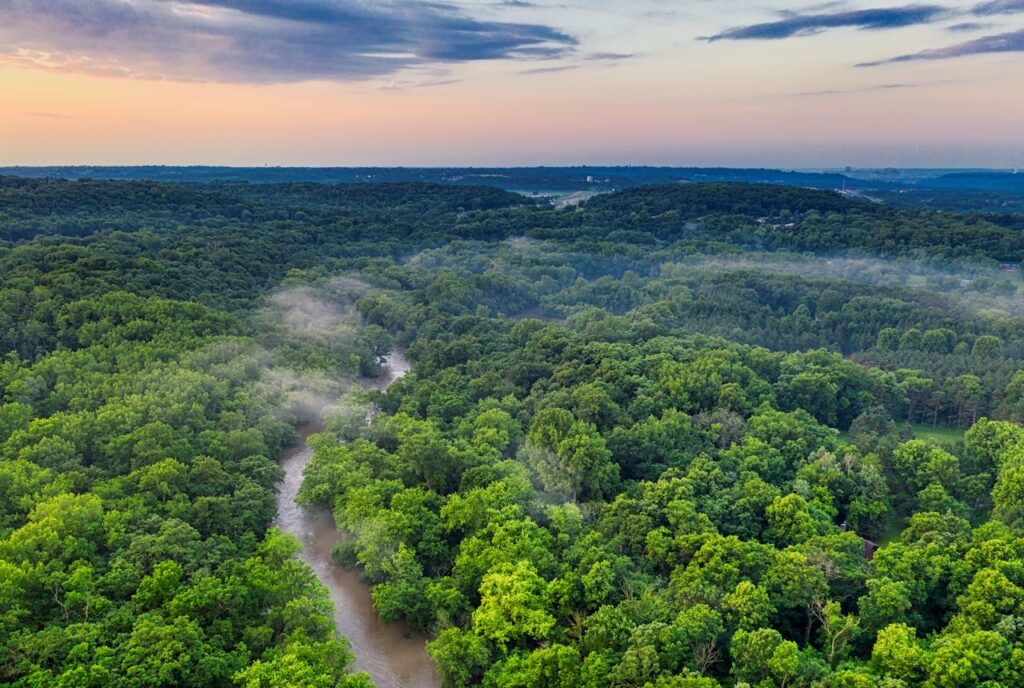
Learn More: What is Human-Environment Interaction?
6. The Biosphere: Life on a Global Scale
The biosphere is the sum of all ecosystems on Earth, stretching from the deepest parts of the ocean to the highest mountaintops. It includes every living thing, from tiny bacteria to towering redwood trees, and it exists in delicate balance with the air we breathe (atmosphere), the water we drink (hydrosphere), and the land we walk on (geosphere). In simple terms, the biosphere is life itself, and every organism, including humans, is a part of it.
Why the Biosphere Matters to You
When you step outside and feel the warmth of the sun, listen to birds chirping, or watch the waves crash against the shore, you are experiencing the biosphere in action. Every breath you take is made possible by trees and oceans producing oxygen. The food on your plate comes from ecosystems that rely on healthy soils, clean water, and pollinators like bees.
But here’s the challenge: this incredible, life-supporting system is under threat like never before.
Threats to the Biosphere: Climate Change and Habitat Loss
According to NASA (2023), global temperatures have risen by 1.2°C since pre-industrial times. While this might not sound like much, it’s enough to cause rising sea levels, extreme weather, wildfires, and habitat destruction. Species are disappearing at alarming rates, coral reefs are bleaching, and forests are being cleared for agriculture and development.
Imagine a world without rainforests, without clean rivers, without the rich biodiversity that makes life possible. That’s what’s at stake.
Actionable Steps to Protect the Biosphere
You don’t need to be a scientist or activist to make a difference. Small changes add up:
- Reduce your carbon footprint – Walk, bike, or use public transport. Choose renewable energy when possible.
- Protect natural habitats – Support conservation efforts and avoid products linked to deforestation.
- Promote biodiversity – Plant native species, reduce pesticide use, and support sustainable food choices.
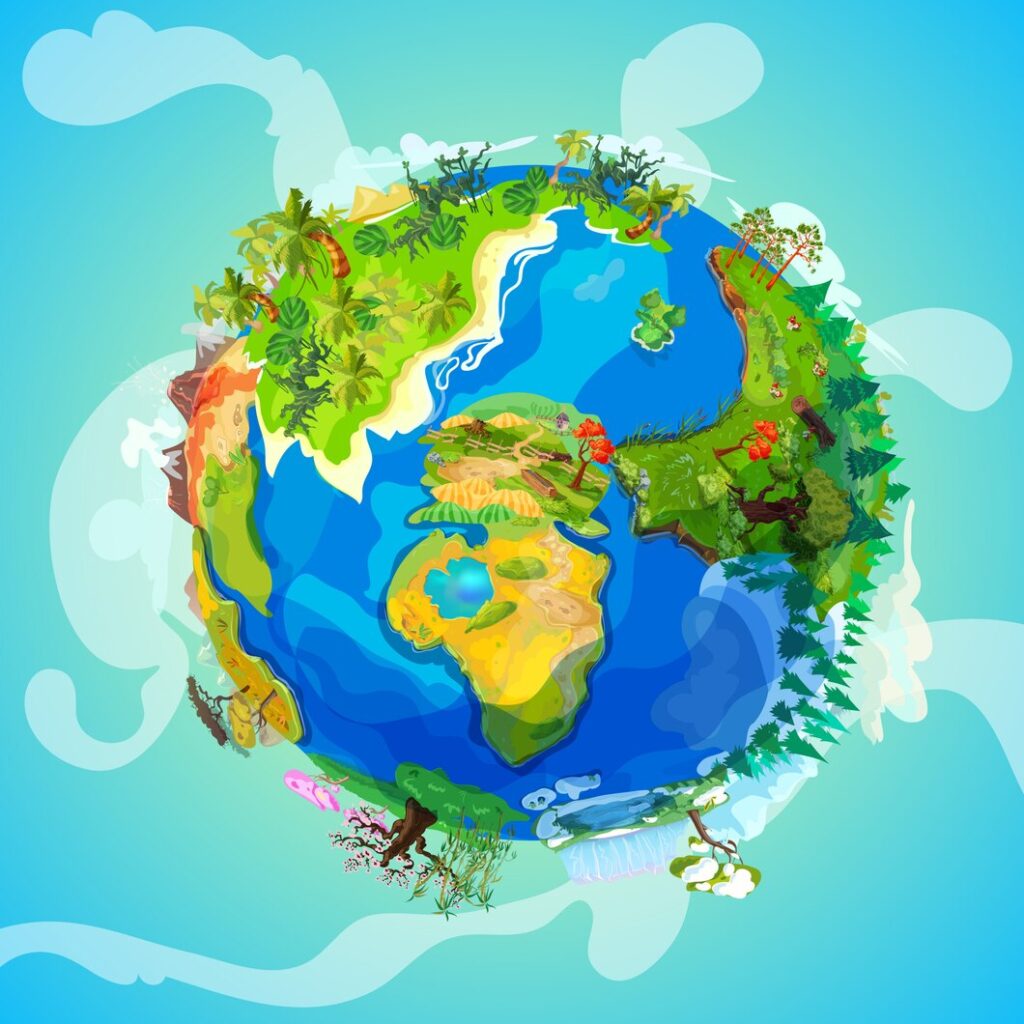
Conclusion: Why Understanding Ecosystems Matters
Studying the levels of organisation in ecosystems helps us see the big picture. From a single cactus to the global biosphere, everything is interconnected. Whether you’re an environmental activist or just a nature lover, your actions impact ecosystems.
So next time you step outside, take a moment to observe. Whether it’s a lone bird, a busy ant colony, or a vast forest, you’re witnessing an incredible, structured system—one that we all have a role in protecting.

